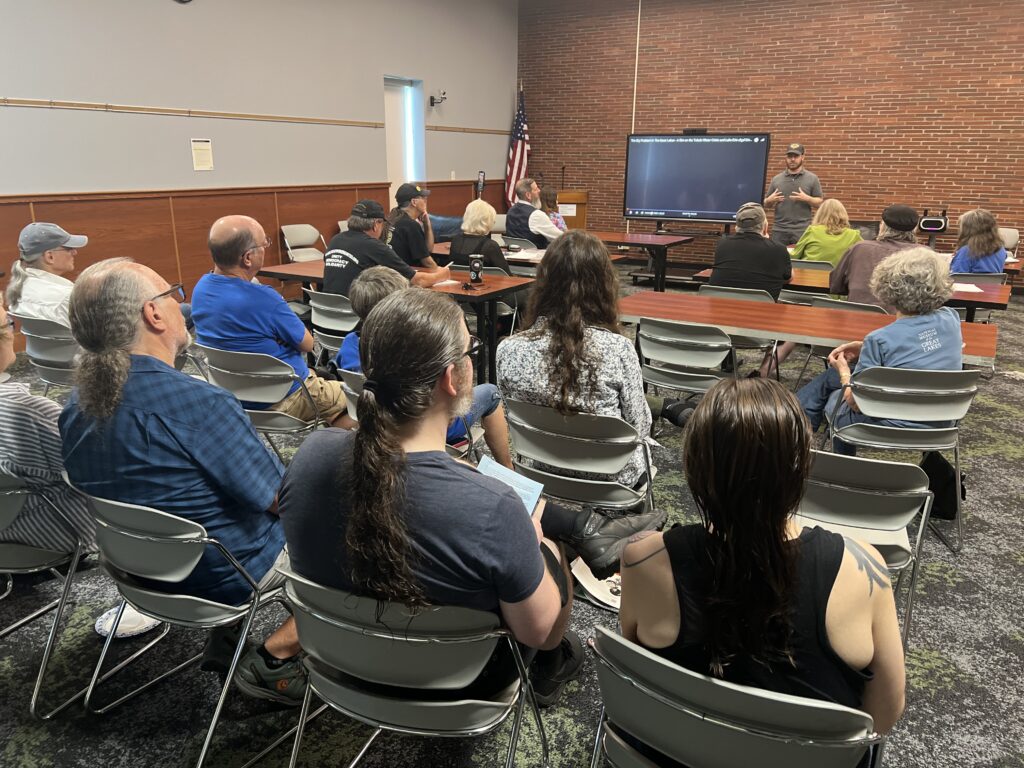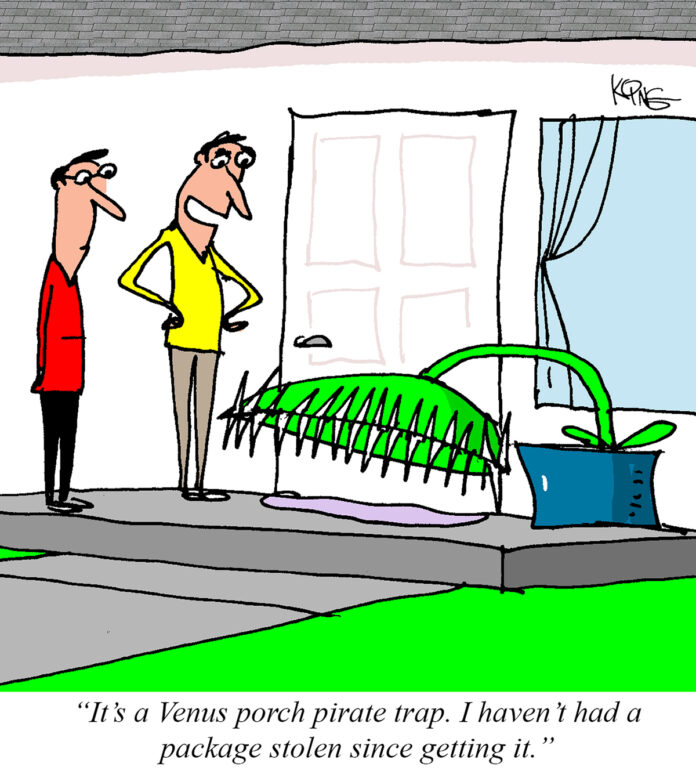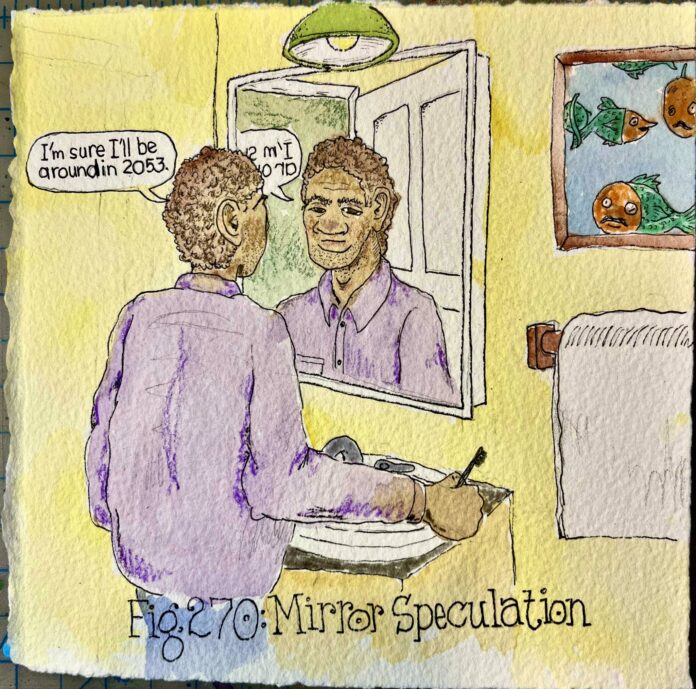Caring for sacred creation
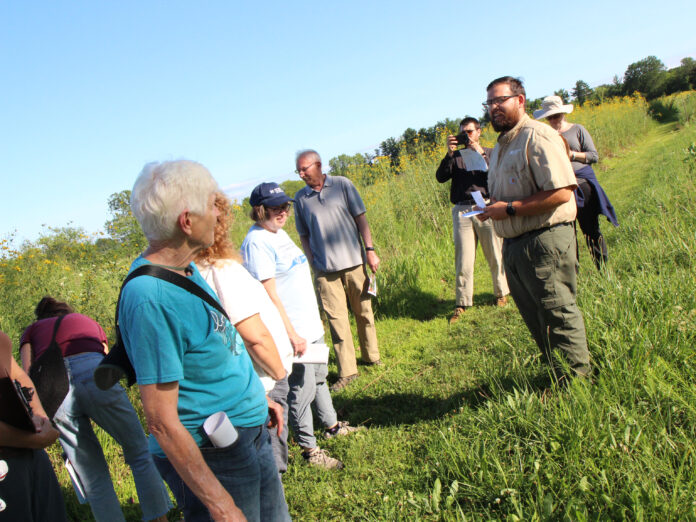

Pollinator prairies take root for Sacred Grounds Toledo program
SWANTON – The original motivation for installing a pollinator prairie at Faith Lutheran Church was simply to mow less.
When the congregation moved a little more than half a mile down the road four years ago, their new church home came with a huge increase in acreage, as well as square footage. The old building on the corner of Dodge and Walnut streets in the village of Swanton occupied about a third of an acre, while the new property sits on about five acres.
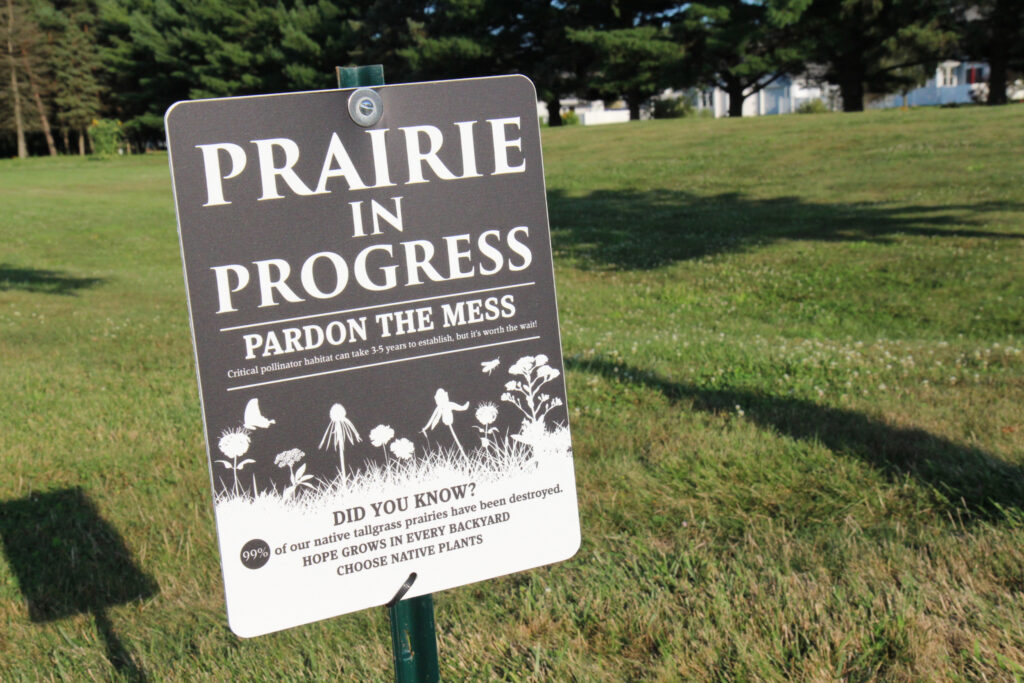
Zack Wertz, a lay leader with a background in natural resources, helped his congregation come up with the plan to transform about one fifth of that land into a native plant prairie and community garden. The first seeds were planted three years ago.
Since then, the pollinator prairie and community garden have grown to become a model for Sacred Grounds Toledo, a National Wildlife Federation program that recognizes houses of worship that create wildlife habitat and link faith practices with caring for the environment.
Wertz seeded the prairie with a blend from the Ohio Beekeepers Association that he combined with several types of grasses, choosing the mix for its high concentration of wildflowers. He says he wanted the prairie to be as bright and showy as possible to appease the concerns of anyone who may have worried about the less manicured appearance of the landscape.
The results have exceeded his expectations, with new blooms appearing each year. Plants include milkweeds, partridge pea, purple coneflower, black-eyed Susan and coreopsis. In the mornings “you can sit out there and hear all the bees. The thing actually hums,” said Wertz.
A growing movement
Wertz and his wife, Laura Wertz, welcomed visitors and shared their congregation’s prairie story Aug. 7 during a tour organized by Sacred Grounds Toledo. In addition to Faith Lutheran, the tour included stops to view a new prairie at Community of Christ Lutheran Church in Whitehouse and the cultivation fields of the Blue Creek Seed Nursery of Metroparks Toledo.
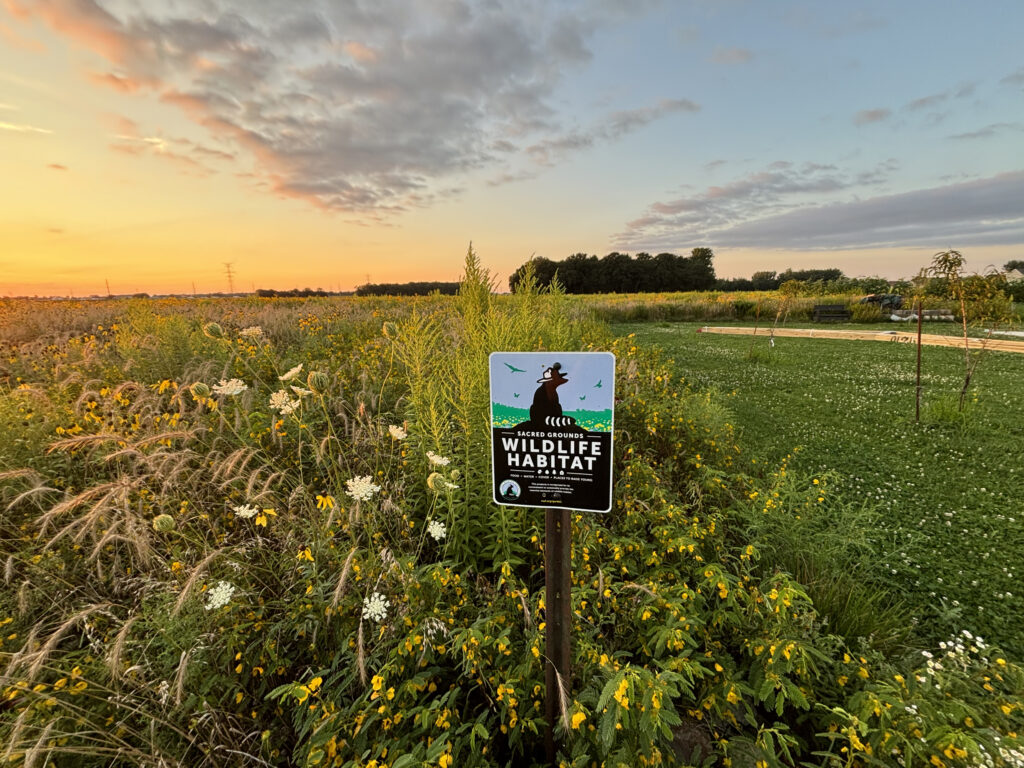

“What we hope to accomplish with this tour is to show people what’s possible in their faith community, in their own yard, and know that they don’t have to go it alone,” says Marilyn DuFour, a senior environmental specialist with the City of Toledo’s Division of Environmental Services.
DuFour brought the National Wildlife Federation program to Toledo with the help of Hal Mann, of the Oak Openings Region Chapter of Wild Ones, a nonprofit that promotes the benefits of growing native plants. They were inspired by a segment of Catherine Zimmerman’s documentary, Hometown Habitat, which featured the Sacred Grounds program in the Chesapeake Bay area.
Sacred Grounds Toledo is run under the umbrella of the Toledo-Lucas County Rain Garden Initiative with support from many local environmental organizations.
Houses of worship make a perfect partner in the native plant movement for a several reasons. “They usually have a lot of ground that they’re not using,” said Mann. “And it turns out that every faith tradition that I’m aware of has a core belief that we have to take care of the Earth.”
Sacred Grounds Toledo began in 2017 with five sites in northwest Ohio and has grown to include more 30 faith communities, including Christian, Jewish, Muslim and Buddhist. Gardens are located in both rural and urban settings, with some congregations adapting existing garden beds and others installing new ones.
“There’s no size stipulation. It’s really about providing habitat or stormwater management,” says DuFour.
Plants that are native to the region support pollinators such as bees and butterflies, improve water quality and create wildlife habitat, among other environmental benefits.
“Through the faith community lens, it’s all about stewardship of God’s creation and caring for God’s creation,” says DuFour. “But all of us who work in the environmental sciences know that there’s a lot of good that happens ecologically.”
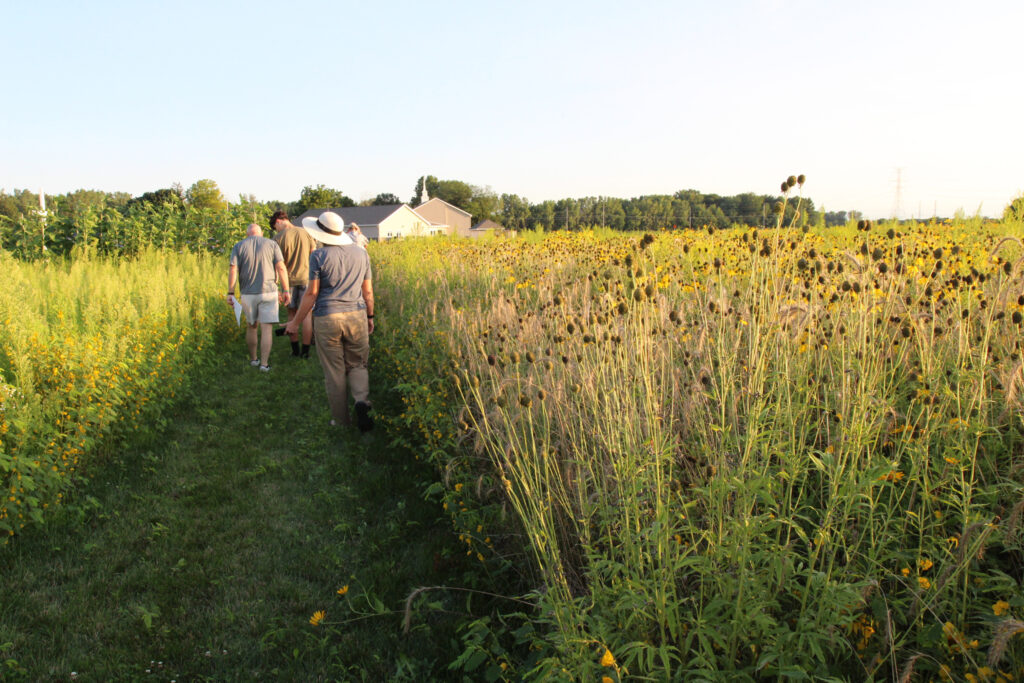

At Faith Lutheran, pastor Dalton Rosa-Ruggieri says the congregation has responded well to the prairie as “a beautiful part of God’s creation.” Many visitors have also come from other churches and organizations to learn from their example.
Adjacent to the prairie is a community vegetable garden that provides fresh food for Salem Lutheran Church in North Toledo. The church has incorporated this natural backdrop into worship by holding services outside during the warmer months. An outdoor pavilion is under construction this summer, and an asphalt path connecting it to the parking lot was added to improve accessibility.
“It’s a pretty important part of who we are at the church here,” said Rosa-Ruggieri. “This is a good way to steward the creation that we’ve been tasked with, to return back to maybe a more natural state, to encourage the pieces of creation that God put here to start with.”
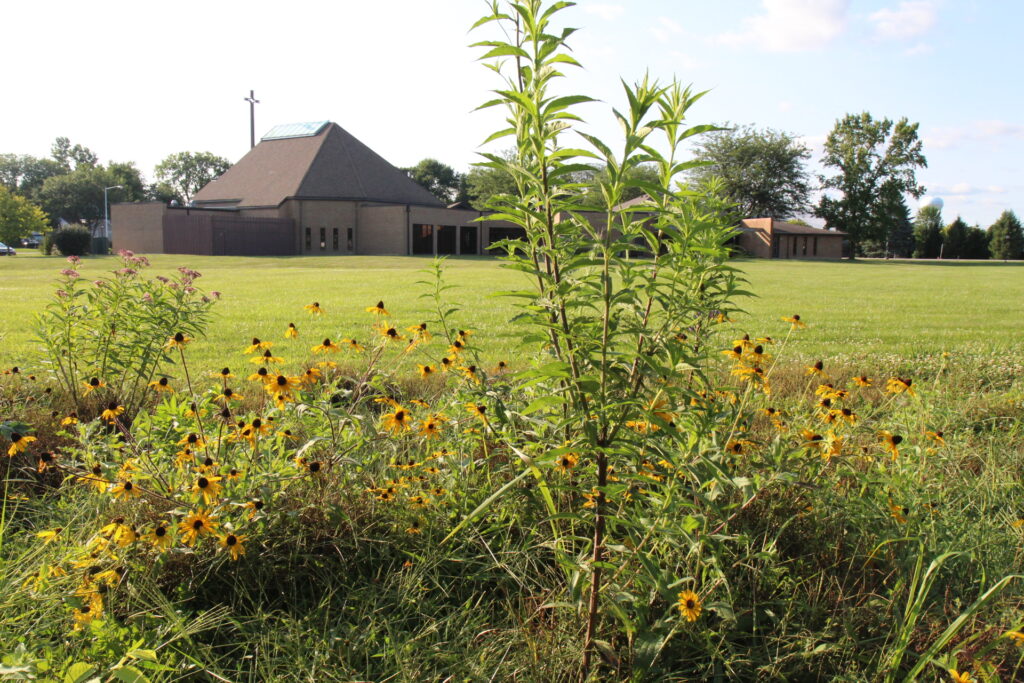

Sound Off for Lake Erie
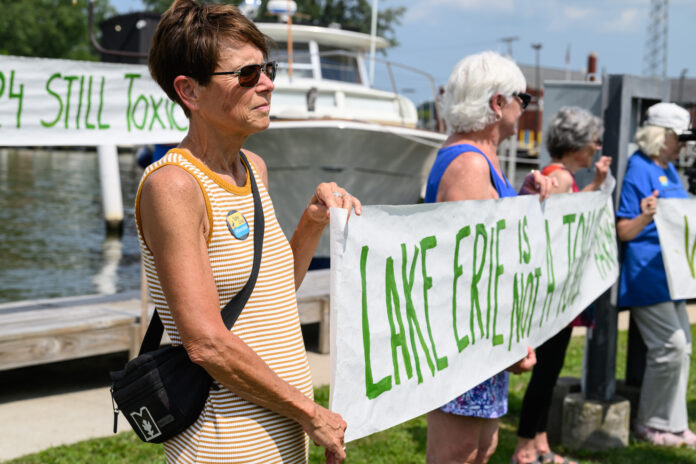

10 years after Toledo water crisis, lake water still green
POINT PLACE – “Ten years later, we no longer have a drinking water problem, but we still very much have a lake water problem,” admitted Toledo mayor Wade Kapszukiewicz while aboard the Jet Express at a Lake Erie Waterkeeper (LEW) event on Sunday.
He was on board to mark the 10-year anniversary of the Toledo water crisis. For three days back in 2014, water advisories and shut offs plagued citizens, something many thought would be impossible in such a large municipality.
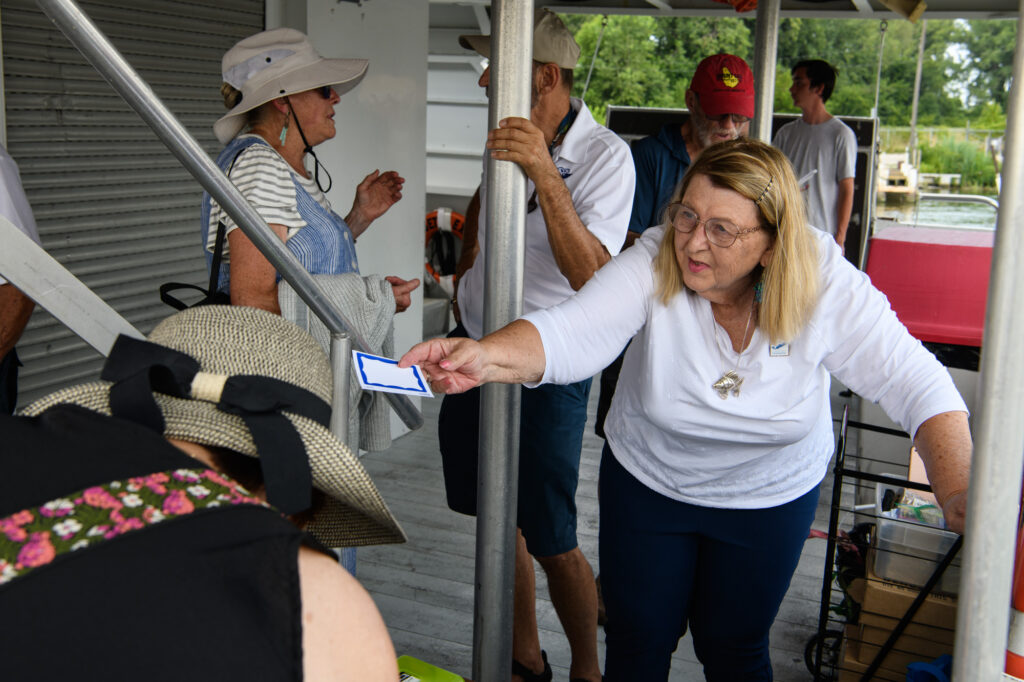

Sandy Bihn, of the LEW, hosted the event on the ferry service. The organization is a nonprofit that seeks to have fishable, swimmable and drinkable water for the Lake Erie watershed through advocacy, education, litigation and innovation. The trip allowed people to remember the challenges of 2014 and to see the state of the lake a decade later.
“Ten years ago, a boat was taken out from Meinke Marina and out to the intake. The algae was all the way down the water column, all the way down to the bottom and we all witnessed it,” recalled Bihn. “Here we are, 10 years later, and there’s no progress. The lake is still green, and we’re all frustrated.”
Bihn and other speakers, including Lucas County commissioner Lisa Sobecki and Ottawa County Sanitary engineer Kelly Frey, gave remarks that were broadcast to the passengers and any boaters listening on Ch. 68.
Sherry Flemming, a clean water and Lake Erie advocate from Williams County, spoke about a few of the lake’s issues today. Industrialized livestock production, the increase of liquid manure and a lack of regulations were some of the challenges.
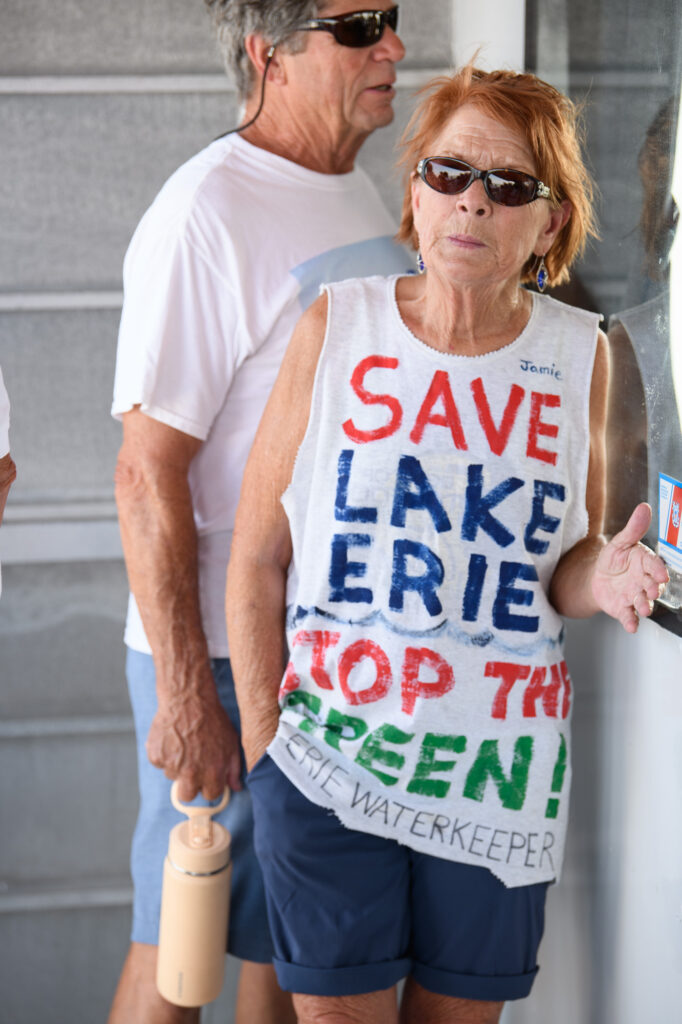

“Three years ago, we learned that Williams County was the proposed site for a concentrated aquatic animal production facility; a massive genetically engineered salmon facility that would produce 10,000 metric tons of salmon drawing almost five million gallons of water a day and discharging that much water a day into a tributary of the Maumee River,” said Flemming. “During the permitting process for that facility, the Pokagon Band of Potawatomi submitted comments that should give us pause and make us reflect on our priorities.”
“Traditional teachings passed down for generations by the Pokagon Band and other Mawtheshnowen nations respect water, which is sacred, as an essential element for life. We need to ask ourselves: What is our responsibility to water and the ecosystems that we depend on for life? Should laws prioritize the health of ecosystems, like Lake Erie, that support all life instead of viewing water as just another resource like oil and gas?” she said.
Director of the University of Toledo Lake Erie Center, Dr. Tom Bridgeman, said scientists and water treatment plant managers have made significant progress in dealing with harmful algal blooms. Harmful algal blooms are the rapid growth of algae or cyanobacteria in water that can harm people, animals and the environment.
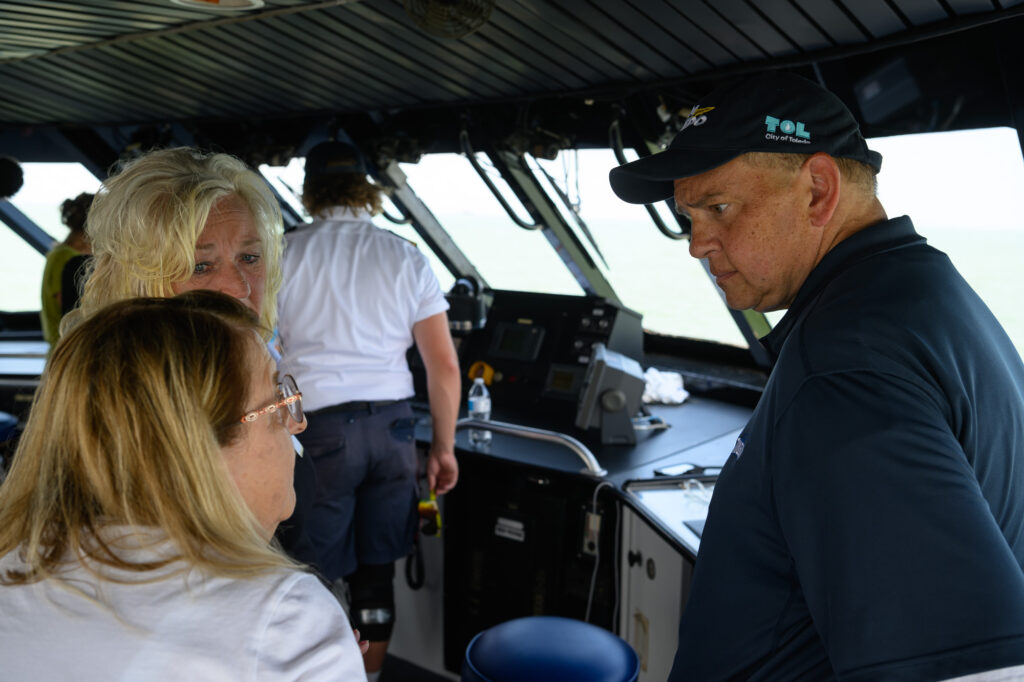

There are now better ways to predict and track the blooms, but, as Bridgeman said, “we haven’t made a lot of progress in preventing the blooms in the first place. If we can prevent blooms, then we don’t have to worry about all these details.”
As the Jet Express approached the water intake green waves lapped its sides. It’s the same water intake that provides clean drinking water to approximately 500,000 people from Northwest Ohio and Southeast Michigan. At 3:45 p.m., the Jet Express and surrounding boaters honked their horns as a united sound off for Lake Erie.
Toledo Free Press 2.0 is live!
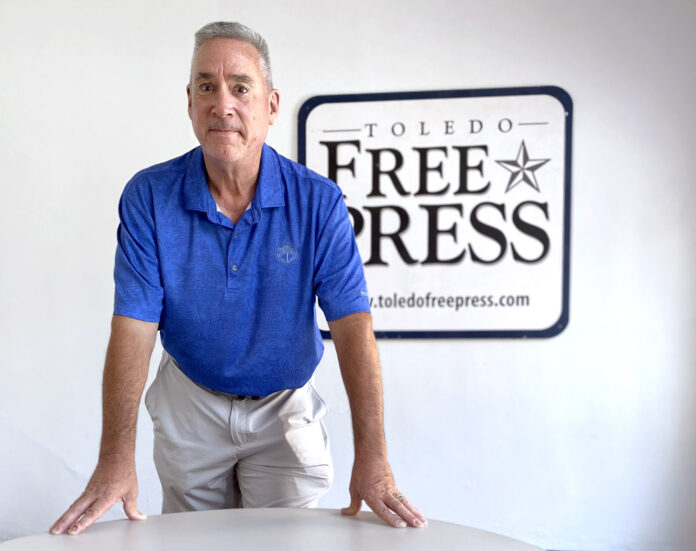

TFP founder and publisher Tom Pounds takes us on his 19-year journey
When I first began my newspaper career back in 1990, the newspaper (The Los Angeles Daily News) was inches thick. We used to call it the information miracle.
All those people were on staff to create, print and deliver the paper in less than six hours. It was the place to get your daily dose of news, sports and advertising. In fact, there was only one place where you could go to get a job, buy a car or a house or find a garage sale. It was a dominant medium that had few rivals. With all that advertising, you could fund plenty of reporters and editors and create a great newspaper.
Back in 1990, the newspapers also got into the web business and started putting their product online. This trend continued for a few years until the “bright” leaders of our industry decided that giving the content away on our websites was the way to go. This was a hard trick to give away content online and still expect to sell a hard copy on the street.
When I arrived in Toledo as the vice president and general manager at the Toledo Blade in 2000, we were facing struggling circulation numbers and advertising was starting to go the way of the internet.
You could buy cars and homes over the internet. E-Bay was booming, and Craigslist followed. The game was changing. In 2004 I left the Blade and started the Toledo Free Press as a free weekly that was home delivered, as well as available on newsstands free of charge. We were quite successful for many years (we lasted 10) before lawsuits and diminishing advertising finally put an end to that dream.
I tell people that if advertising was what we were really good at, we would still be in business. Unfortunately, that was not the case. What we were good at was journalism. Of the 10 years we were in print, we were named the “best weekly in Ohio” six of the 10 years we were in business (we were second place the other four) by the Society of Professional Journalists. That was the Pulitzer Prize for us.
What we have seen over the years was the eroding of funding in the industry, which, in turn, led to layoffs in newsrooms everywhere. Journalism was being destroyed day by day and year by year. Nowadays, you can buy or sell a car within hours of posting them on Facebook Marketplace. Newspapers and journalism were becoming less and less relevant.


The closing of the Free Press in 2015 (10 years to the day of starting) was a tough pill to swallow. I was out of the business for many years until a now-good friend, Sean Nestor, contacted me to see if I had the archives somewhere. His stance was that we were a newspaper of record in those 10 years, and they should be preserved.
I still owned the name Toledo Free Press and the URL for the website. It was just blank when you went to toledofreepress.com. That was in 2019. What we have done since is restore the archives (still working on that to make all articles searchable) and get the site back up. When that happened, people noticed. I started getting news tips and thought to myself “there is still a hunger for local journalism!”
With the Blade’s dwindling circulation numbers (was 230,000 for Sunday papers when I left and it is now around 30,000), Toledo was turning into a news desert. That prompted me and Sean to start thinking of funding ideas to bring the paper back online. We landed on the nonprofit model, where we could still sell advertising, but it won’t be the main source of revenue. Donations would.
So, we began the process to build an organization that could support this effort. About two years ago we created a board of directors – local people to help us navigate the ups and downs of nonprofit fundraising. Our board includes:
- Brandi Barhite, director of enrollment communications at Bowling Green State University and former Free Press writer who also helped train our interns
- Dr. Bailey Dick, assistant professor of journalism at Bowling Green State University and a former intern for the Toledo Free Press
- Dan Kimmet, retired executive at Eaton Corporation and a friend. He also serves with me on the Owens Community College Foundation Board
- Sean Nestor, a network engineer at Sauder Woodworking Co., activist and self-proclaimed journalism fan. He also serves on the Toledo Integrated Media Education board (our parent board) and is a writer as well
- Linda Stacy, retired from Owens Community College as a workforce development officer and special assistant to the president for community relations. She is also a grant writer and has nonprofit experience
This great group has helped us get to this point to relaunch the Toledo Free Press as a nonprofit, online and free newsroom with no pay walls. Our goal is to bring more quality journalism to Toledo and our surrounding communities.
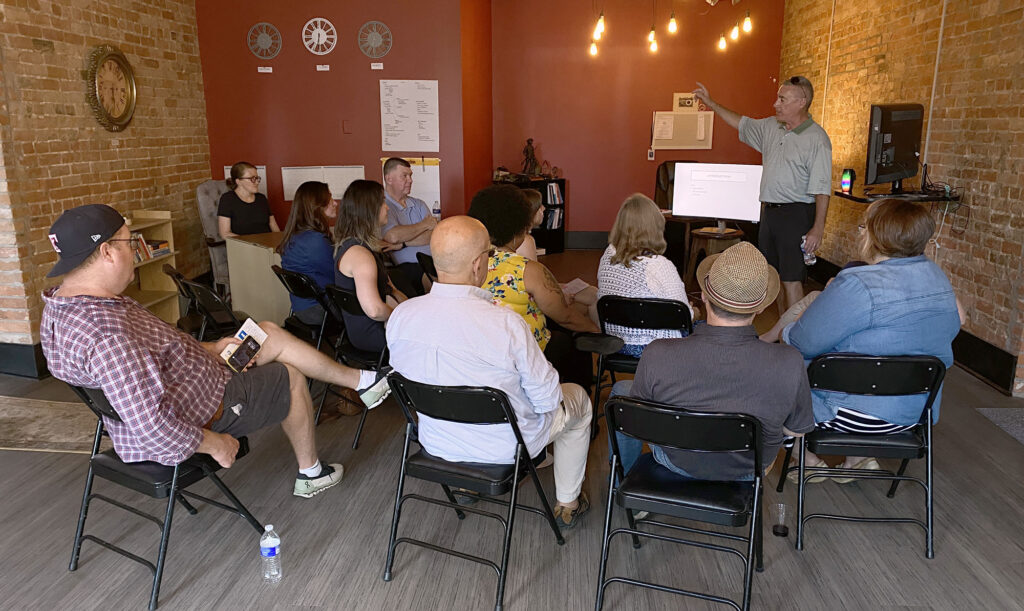

We will still have our “glass half full” attitude towards Toledo but will also do the investigative work and keep those in power accountable.
We will mentor and hire journalism to students from Bowling Green, the University of Toledo and Hillsdale College in our intern program. We will also look to incorporate area high schools in the area. We will be committed training future storytellers.
We will be transparent. The days of “sources close to say” are over (at least for us). We will also be nonpartisan. We will have an opinion section for the community to air their views, but we will not have our own. We will not endorse candidates but will give them the space to tell their stories.
We will also collaborate with funeral homes to offer free obituaries. We have a few now (Walker Funeral Homes and Coyle) and hope to get them all soon.
We want to be the place you go to find out anything in Toledo. Our agreement with WTOL as a news partner will also help us (and them) get the word out on stories that have high interest in the Toledo region.
Our goal is to create a quality newspaper you are used to. We want what’s best for Toledo, which is a great news source.
Please join us and become a member. Sign up to get our weekly newsletter and use the donate button to support us. We will be funded by our readers, grants and advertisers; that’s how this will work. We are delighted to be back and want you involved. Please keep reading us and support our team, if you can. This time, we will make history!
Is Toledo a sacrifice zone?
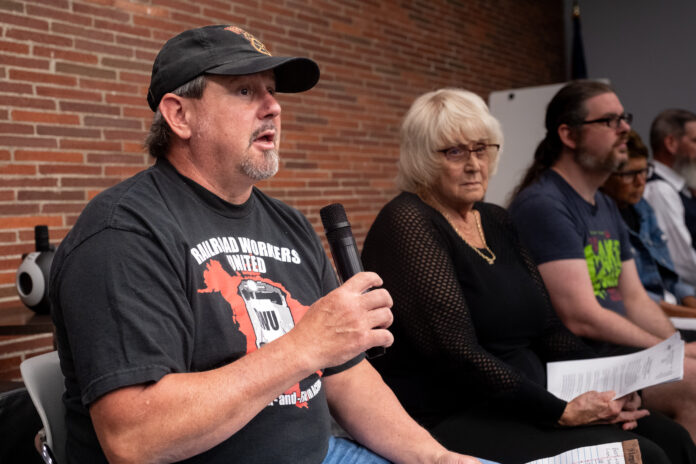

Conference on Corporate Caused Disasters targets unsafe water, train derailment
TOLEDO – It’s an anniversary few Toledoans will ever forget.
August 2, 2014: The day Toledoans woke up to warnings not to drink, bathe or cook with municipal drinking water. It was the day Toledoans came to understand just how devastating blue-green algal blooms in Lake Erie could be when toxic cyanobacteria contaminated the water supply for 400,000 human beings.
The algal bloom and undrinkable city water made national news—and not in a good way, either.
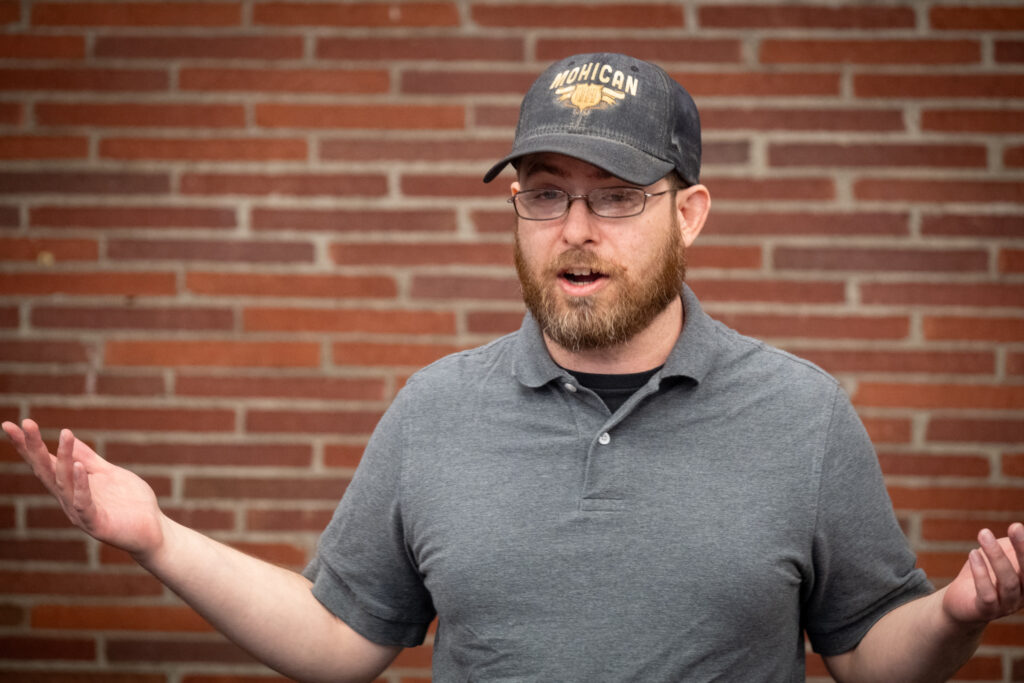

Ten years after the three-day water crisis, Mike Balonek, a Toledo filmmaker, crafted a short documentary about the challenges of blue-green algal blooms that still face the region. His film, The Big Problem in the Great Lakes, which premiered Aug. 3 at the Kent Branch Library, was part of the Conference on Corporate Caused Disasters, which he helped organize.
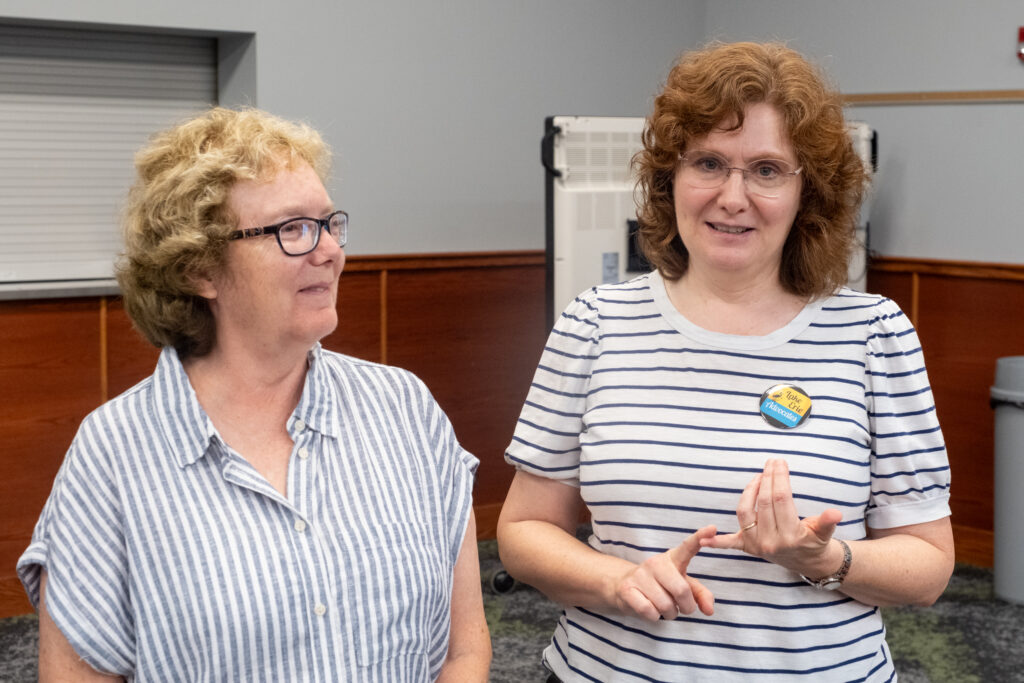

Balonek claimed he was never an organizer, but a filmmaker. The train derailment and burning of toxic chemicals in East Palestine, Ohio, last year motivated him to bring people from many different backgrounds together to discuss what they have in common.
“Everyone felt that now is a good time to start a movement, a movement where everyday people work together to protect themselves from the environmental harms that their local, state, or federal government won’t,” he said.
“If you live here (Toledo), you live in a sacrifice zone,” said Balonek. A sacrifice zone is defined as any area where you and your family’s health and safety are being sacrificed for corporate profits.
The documentary shows that there is little actual enforcement of environmental regulations when it comes to factory farms or Concentrated Animal Feed Operations (CAFOs). These factory farms, with thousands of beef cattle, dairy cows, pigs and chickens contained in relatively small areas, produce huge amounts of manure used as fertilizer on fields, causing massive run-offs of excess manure into local streams and rivers. Eventually all the phosphorus and nitrogen winds up in Lake Erie where an overabundance of these nutrients can cause large blue-green algal blooms.
There is little interest coming from the federal government about how these algal blooms can poison the drinking water for upwards of 11 million people living along the shores of Lake Erie in both the U.S. and Canada. Their attitude is that the people of the Great Lakes can take care of themselves.
Toledo mayor Wade Kapszukiewicz, interviewed in the documentary about the 2014 water crisis, said, “A single CAFO shouldn’t be approved going forward, but they’ve approved 50 new ones since then. The state continues to look the other way. The state uses Lake Erie as a toilet.”
There’s a lack of enforcement.
Sandusky County farmer Tony Ruffing
And with farmland selling for approximately $10,000 an acre in NW Ohio, according to Ruffing, more and more corporations/billionaires are buying it up. Small farmers who practice environmentally friendly farming cannot hope to compete unless laws and regulations are changed in their favor.
After the film showing, a panel of activists from Lake Erie Advocates (LEA), Toledoans for Safe Water, East Palestine and Piketon, Ohio, and San Francisco (via Zoom) gave testimony about the corporations that have caused environmental disasters in their areas, and how the people are fighting hard for recompensation and needed remediation of the toxins in their air, land and water. This includes the many decades-long fight for the removal of radioactive nuclear wastes left over from government projects in Piketon, Ohio and San Francisco.
It’s an uphill battle.
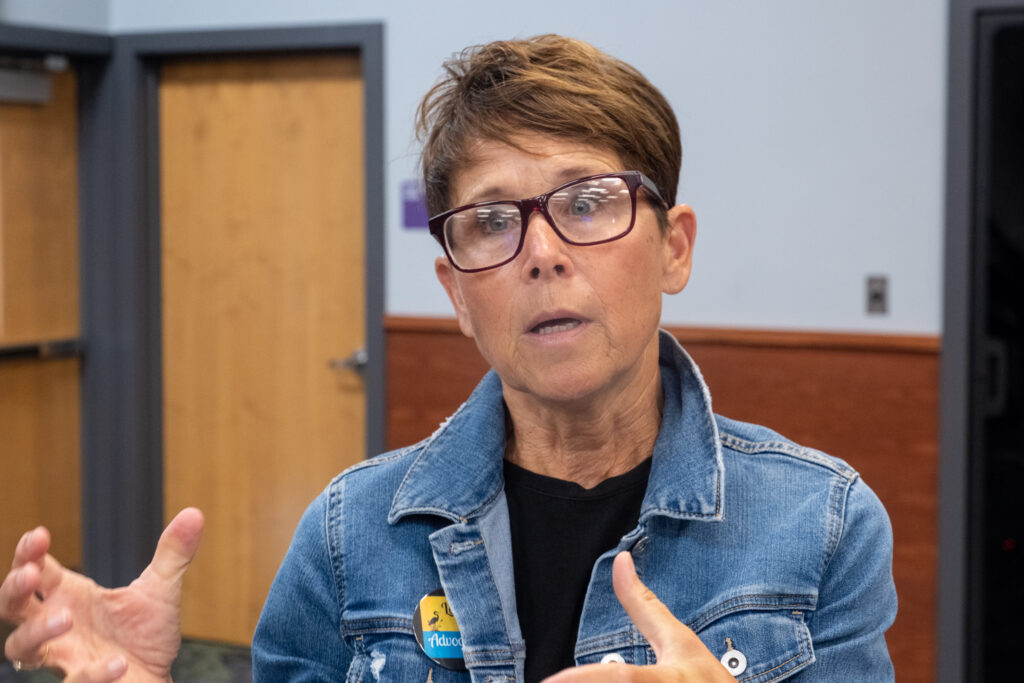

“CAFOs are not a sustainable industry,” LEA activist Kim Axe noted. The federal and state governments subsidize them to produce excess products such as milk, that sometimes later cannot be sold. The state of Ohio even pays farmers $60 an acre to spread the plentiful CAFO manure onto fields, but it doesn’t monitor how much is being used, leading to the excessive nutrient run-offs into the lake which causes the toxic algal blooms.
Most of the activists stressed how corporations and their lobbyists have tremendous influence over politicians and government agencies. Regulatory capture is real.
The Environmental Protection Agency (EPA) provides permits to corporations stating how much pollution they are allowed to dump into the environment and doesn’t always monitor what’s happening. The panelists felt that governments at all levels are abdicating protecting the public’s health and safety.
But there is unity in the community. Ohioans can come together and fight back against this corrupt system.
“Why is clean, safe drinking water controversial?” asked Toledo activist Sean Nestor. “Who could be opposed to clean water?”
“The voice of the people is muffled by the corporations,” added Matt Weaver, a Railroad Workers Union member who noted a pattern. “Regulations interfere with profits, the quest for shareholder happiness. You can’t trust an industry to self-regulate.”
Each of the panelists gave examples of how corporate farmers, railroad corporations and the nuclear industry have failed to self-regulate, and offered suggestions on what the public can do about it.
“Let the people know what’s happening,” said Chris Albright, a resident of East Palestine. Albright has suffered serious health issues caused by the toxins released into the air from the unnecessary burning of chemicals leaked from train cars after the derailment in February 2023.
The Stafford Act — a federal act that could designate East Palestine a disaster zone and give residents much needed health care and compensation for their homes lost to the pollutants— has yet to be signed by President Biden. Albright lost his job due to his health issues, as well as his good private health insurance. He worries about his children’s health.
It’s going to keep happening. It’s not if but when. They contaminated our town for profit … and our government doesn’t want to pay.
Chris Albright
The government hasn’t provided Stafford Act health care and compensation to the people of Toledo or Piketon, either. But Ohioans are working together to find out what risks there are to our health caused by blue-green algal blooms.
The University of Toledo, along with the Great Lakes Center for Fresh Waters and Human Health, are conducting a study into the effects of cyanobacteria aerosols that people who live, work or recreate near or on Lake Erie in Lucas, Sandusky, or Ottawa counties might have experienced. The film noted that aerosols have proven to be an even greater risk to the public’s health than simply ingesting water or sand that has become contaminated with blue-green algae.
The “GLAMR Study” (Great Lakes Aerosol Monitoring Research Study) needs participants. Call 419-383-6761 or email jennifer.gilmore@utoledo.edu for more information.
Full Disclosure: Sean Nestor is a board member of the Toledo Free Press.
